AOW Scuba Course on Perhentian Kecil
Federico and I decided to take our Advanced Open Water course while staying on Perhentian Kecil- a small island off the east coast of Malaysia. For you non-divers out there, the advantage to having your Advanced Open Water certification is that you can go a bit deeper on your dives (30 meters as opposed to 18), you can enter shipwrecks, you can do night dives, and besides, the dives required to complete the course make you a more experienced diver in general. Fede had completed his basic Open Water course in Koh Tao, Thailand, just prior to arriving in Malaysia, and we were both excited to take it to the next level.
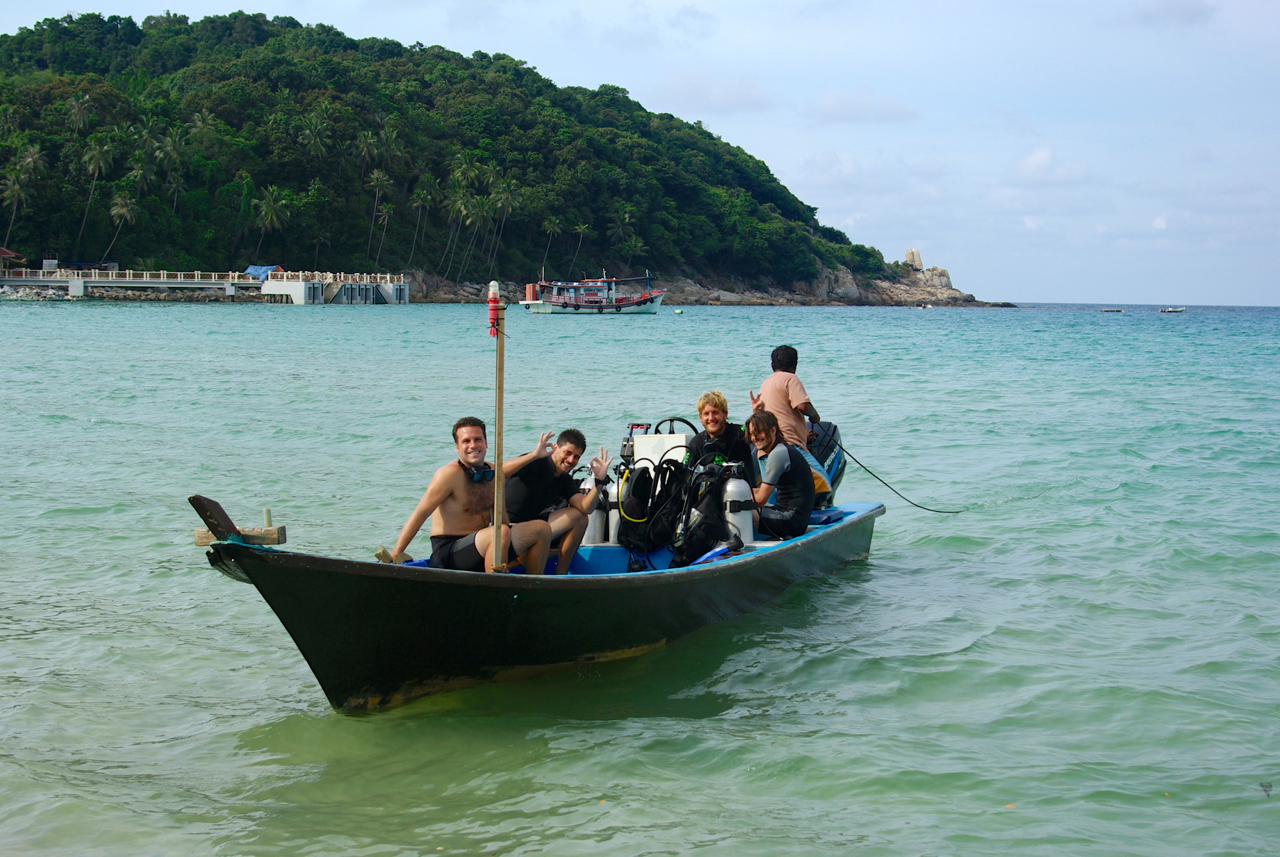
Dive boat on Perhentian Kecil...
Upon our arrival on the island, we walked down the beach, stopping in various dive shops along the way, and ended up in at a place called Turtle Bay Divers. It was full of laid-back dive instructors, all happy to chat with us about anything and everything. We hit it off with this English guy named Will right away, learning that he was living the hard life- instructing dive courses in Malaysia during the peak tourist season, and mixing some diving of his own with a little bit of surfing in Indonesia during the low season. Tough life, right? He was a funny guy, and went on about how great the diving around the Perhentians was. We registered for the 5-dive course, and promised to show up on time and in diving condition (Read: not hung-over) the next morning.
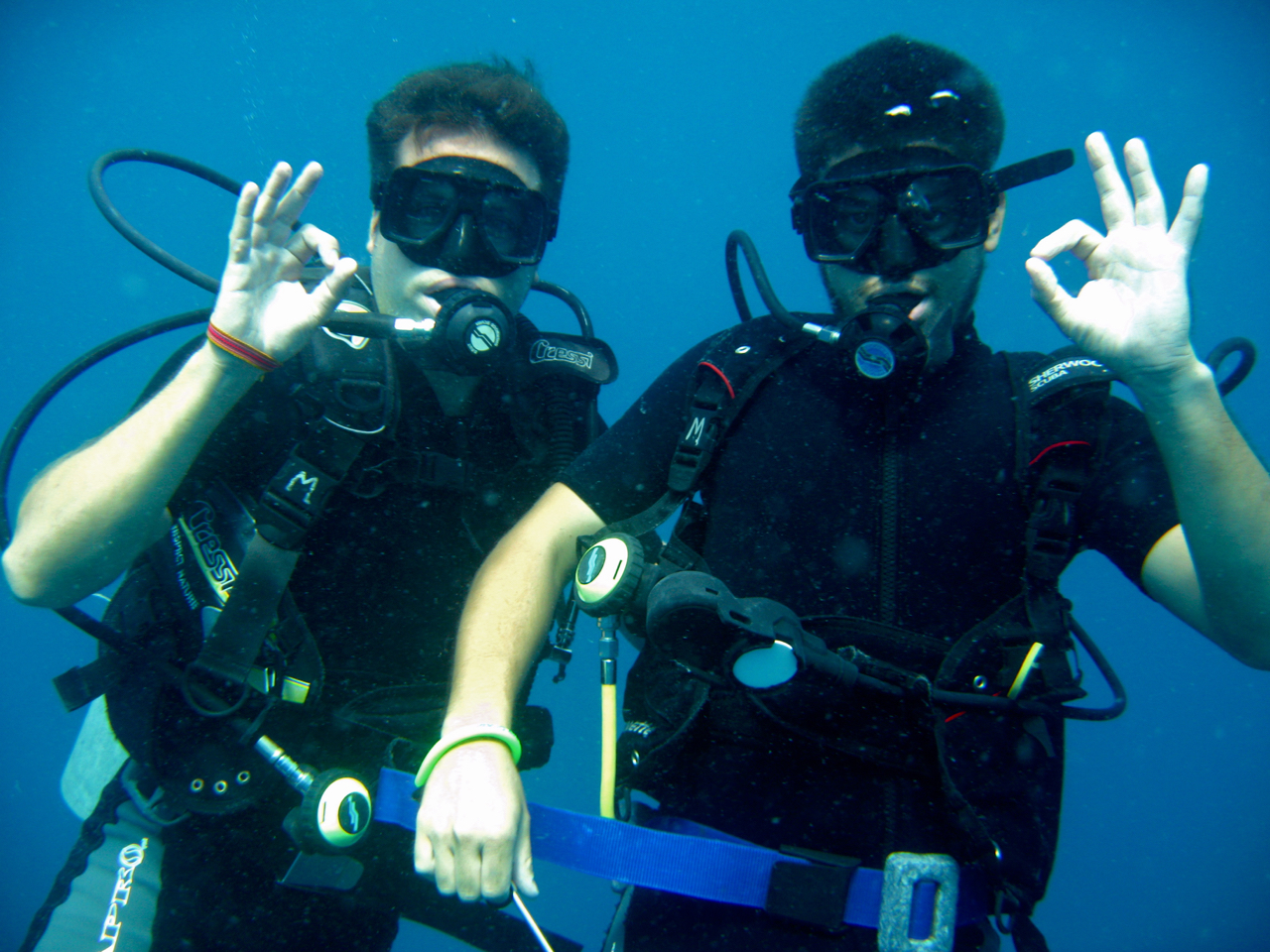
Fede and I, diving in Malaysia....
To complete the Advanced Open Water course, one has to pass on 5 different types of challenging dives. Theres something like 8 or 9 dives to choose from, depending on what your interests are, but of those, 2 are required- the Deep Dive (Up to 30 meters), and the Navigational Dive (So that you can get back to the boat should you decide to dive on your own. A good skill to have, for sure…). The other dives we selected were the Peak Performance Buoyancy dive (Perfect your neutral buoyancy, a key to scuba diving), the Drift Dive (Scuba diving in an area with a strong current), and the Wreck Dive (Safely and responsibly penetrating shipwrecks). The plan was to complete these 5 dives over the next three days, allowing us to complete the course before we left the island.
First up was the Peak Performance Buoyancy dive, a dive we completed just off the beach, right there in Turtle Bay. Our instructor was an English woman named Olivia- ‘Olli’ for short- and she was dead-set on getting us to the point where we could ‘float’ underwater. We had to learn all these skills to adjust our buoyancy while underwater, and then use these skill to do flips, swim through hoops, and maintain our depth for extended periods of time. It wasn’t the most ‘scenic’ dive as far as fish, coral, and other sea life was concerned, though we did have a few curious fish swim by- surely wondering what the heck we were doing, swimming through hula-hoops and doing back flips. Nevertheless, the dive did help us hone our buoyancy, which would help us on dives in the future, and it was fun doing all the challenges. AOW Dive #1, CHECK…
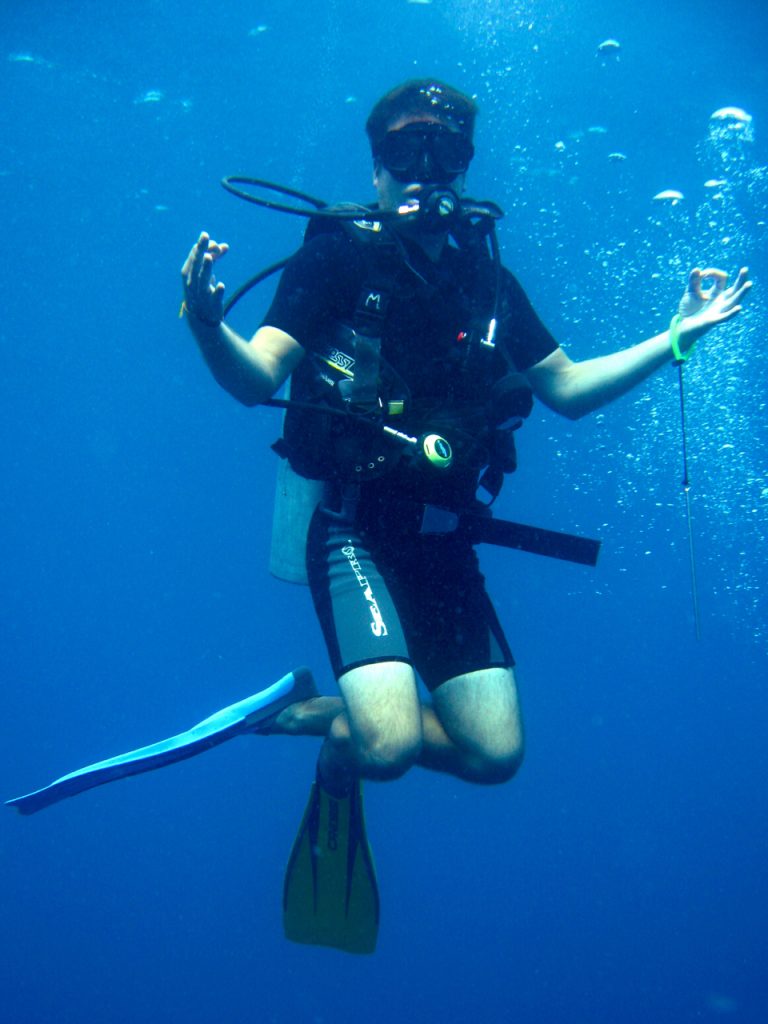
Finding Scuba Zen in Malaysia....
The second dive was the Deep Dive, done at a dive sight called ‘The Pinnacle’. Will was going to be our instructor for the rest of the course, which suited us fine. His easygoing manner and sense of humor about it all took the edge off the fact that we were in a class of sorts, trying to earn a passing grade. The Deep Dive’s primary purpose is to expose divers to the experience of being deeper underwater, where the body may react a bit differently than at shallower levels. The maximum depth for any recreational dive is 30 meters, a depth at which an intoxicating sensation known as Nitrogen Narcosis can take hold. Getting ‘narced’ is a result of having too much compressed nitrogen in the blood stream, and can have dangerous side effects that don’t seem dangerous at the time. An sense of calm and/or elation can come over a diver, causing them to forget about or ignore checking their depth gauges and air supply- not a good thing. Also, due to the compressed nitrogen in the bloodstream, divers can get ‘The Bends’ if they ascend too rapidly to the surface. This is caused by expanding nitrogen bubbles in the blood, and can be debilitatingly painful, with severe cases resulting in death. Hence, its a good idea to know what you’re doing when diving deep. Hence, the required Deep Dive course. There is not a lot to the dive- just a slow descent to the appropriate depth, a few mind games to demonstrate the effects of Nitrogen Narcosis, a bit of sight-seeing around the site, and then a slow ascent, including the ‘Safety Stop’- a 5 minute stop at a depth of 3 meters to allow some of the nitrogen to escape the body before surfacing. That’s it. AOW Dive #2- CHECK…
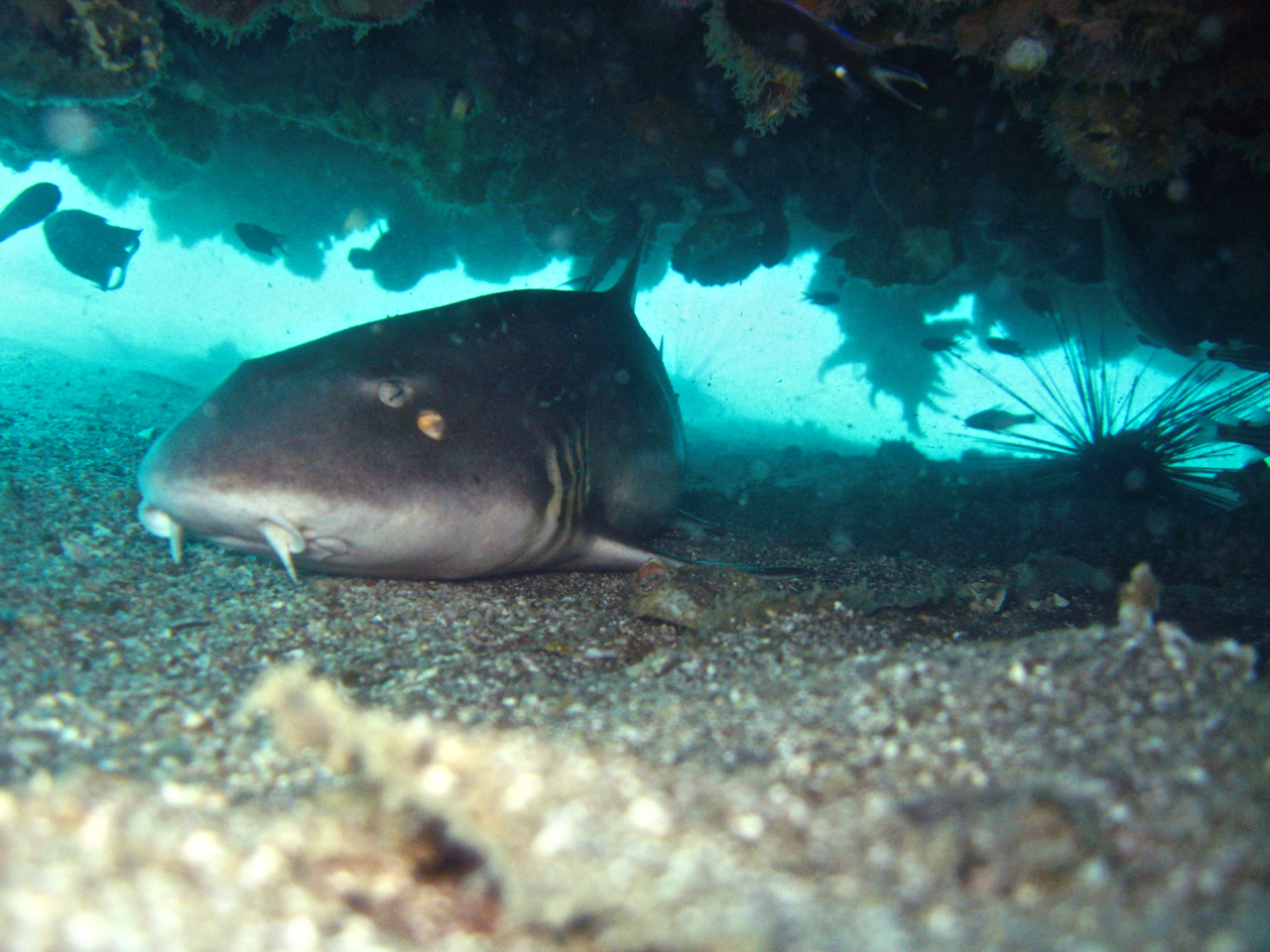
SHARK!!!!!
Our third dive was the Navigational Dive, intended to teach divers how to navigate themselves around a dive site using landmarks and/or compasses. Its pretty funny- you start the course on the beach, learning to use the compasses by navigating along lines drawn in the sand by your instructor. I’m sure the beach bums get a kick out of seeing a bunch of guys in scuba gear stumbling around the beach, arms out in front of them, trying to read a compass without falling over each other. Good times! Then it’s into the water, and those challenges are repeated underwater. You’ve got to navigate a 20 meter square, locate your buddy, and various other skills, all while being able to point to the location of the boat at ALL TIMES. Again, a very useful course for those who may do some diving on their own. We did see some cool stuff on this dive, as we were on a site with a pretty large reef system. Schools of fish, a turtle or two, and a HUGE ray in a so-called ‘cleaning station’- a spot where smaller fish can clean parasites off of its skin. We may have been in trouble if Fede had been leading our dive, as he had NO idea where the boat was at the end of the dive. No matter, apparently- AOW Dive #3- CHECK…
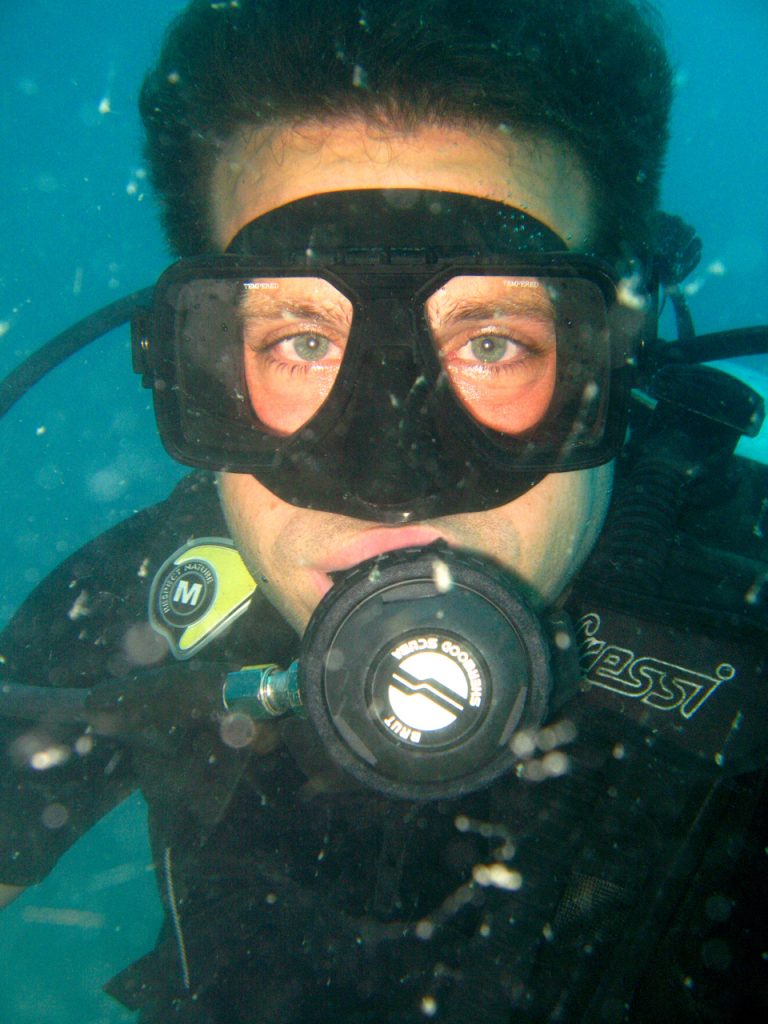
Hello!
The fourth dive we did was the Drift Dive- a dive designed to teach divers how to handle a situation where they are diving in an area with a strong current. There are different entry options for drift dives, designed to get you to the bottom and on the site before you drift over it. This was the most difficult part of the dive, as prior to this, all dives had began with a slow descent, enabling divers to equalize the pressure in their ears and mask regularly without much stress. The ‘Negative Buoyancy Entry’ was very different- instead of entering the water with your BCD (Buoyancy Control Device) inflated like a life jacket, you are supposed to enter with it deflated, and immediately begin swimming down to the depth of the dive site. It is a bit disconcerting the first time you do it, as you feel like you’re not getting enough air due to your lungs compressing as you descend. Not only that, but you’re also trying to equalize your ears and your mask continually, relieving the building pressure. Theres just a lot going on… At first, Fede was stuck on the surface, flailing away upside-down, unable to submerge. It was pretty funny. Will ascended, added some weight to his belt, and eventually, we made it down. On the bottom, we collected ourselves, and the rest was cake. The advantage to a drift dive is that you don’t really have to swim- you just drift along the dive site, riding the current. Its actually very relaxing, unless you see something if interest- then you have to fight the current to stay in one place long enough to satisfy your curiosity. On our dive, we saw several tiny seahorses and a few fish, but there wasn’t much other than that- just the experience of drift diving. At the end of the drift, Will inflated his Safety Sausage- an inflatable buoy that alerts the dive boat to where you will be surfacing. Slow ascent, safety stop, and we were back on the boat. AOW Dive #4- CHECK…
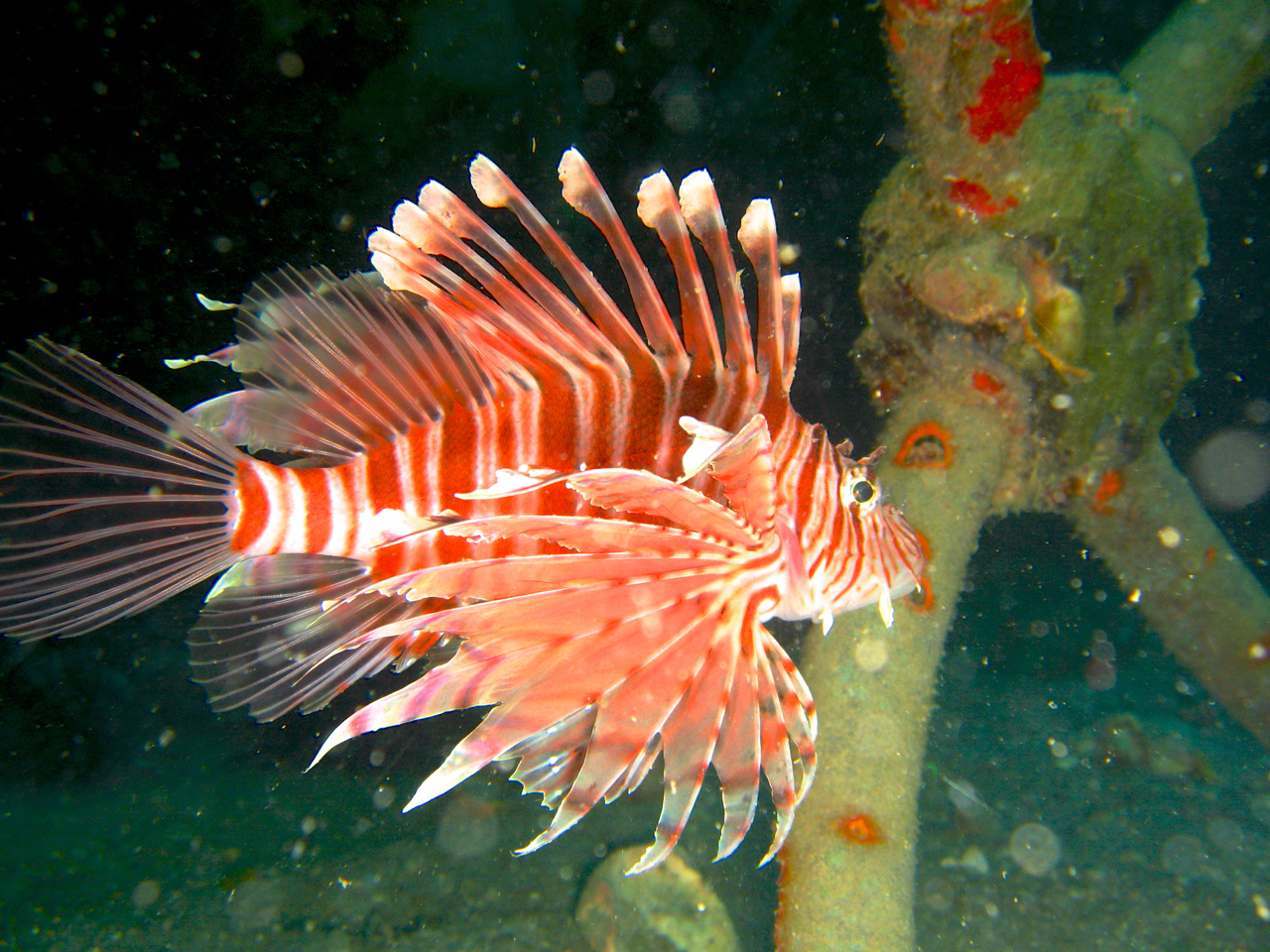
Beautiful Lionfish...
We had saved the best dive for the final dive of the course- the Wreck Dive. This dive is designed to teach divers to safely and responsibly penetrate submerged wreck sites. Many times, wrecks can be unstable, have narrow passages filled with obstacles and protrusions that can tangle up gear, and may have dark areas combined with already poor visibility. Our dive site was the Sugar Wreck- a huge cargo vessel that mysteriously sunk in a shallow channel between the islands. We were lucky- we had a beautiful day, so visibility at the sight was superb. Add to this the drop in the current, and we had ideal diving conditions for our wreck dive. Swimming through the enormous cargo holds was amazing, and we were able to pop up in a small air pocket inside that had developed over time due to the number of divers visiting the site (Don’t breathe it- stale air!). The way the reef had seemingly taken over the wreck was amazing- coral, sponges, and other stationary sea life clung to the ship, straining against the force of the current. There were fish EVERYWHERE- some large schools sticking together, solitary lionfish prowling along the bow. It was pretty awesome. Eventually, we had to surface, and were all smiles on the boat back to the dive shop. AOW Dive #5- CHECK…
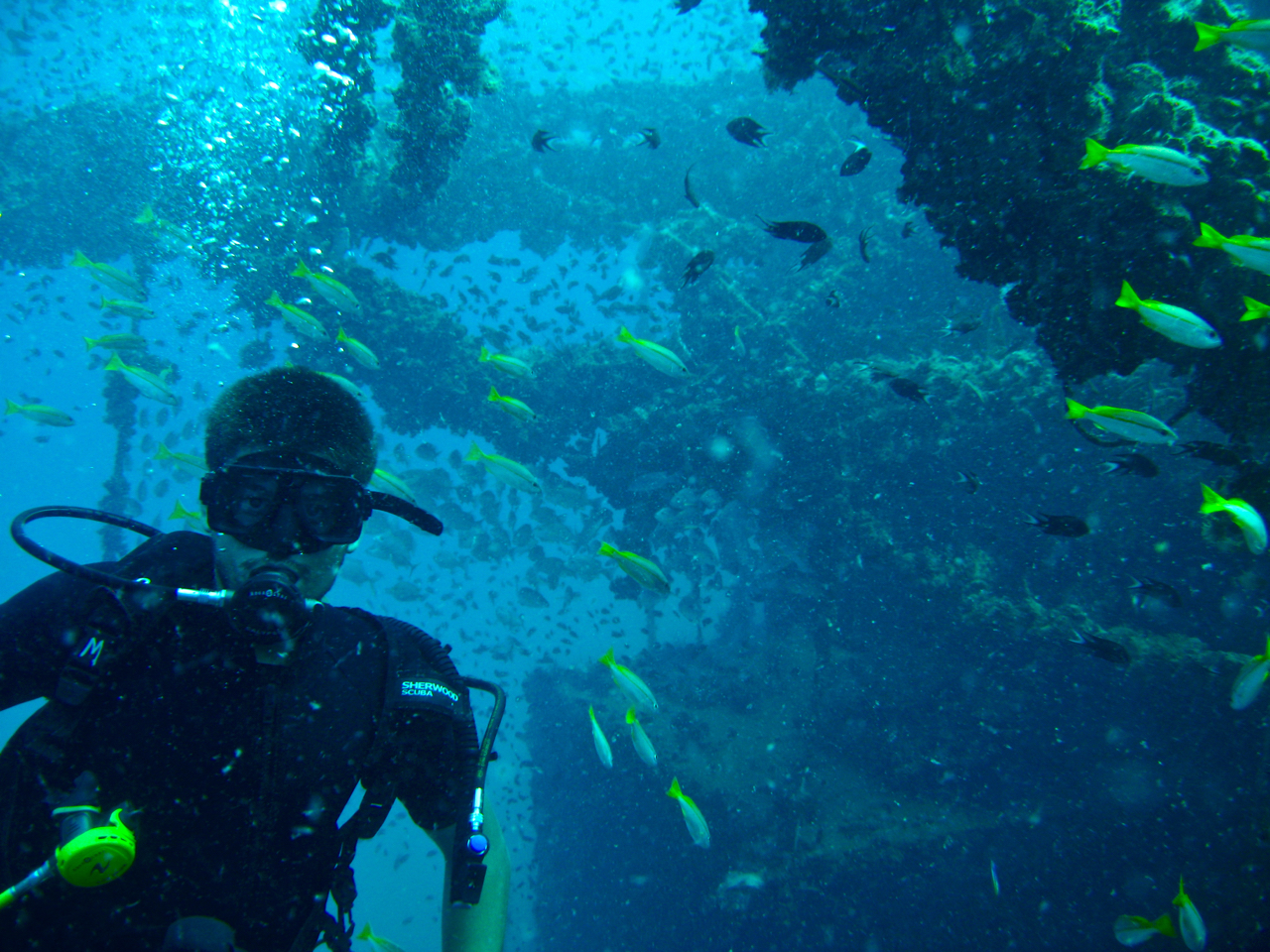
Diving the Sugar Wreck in Perhentian Kecil- AWESOME!!!
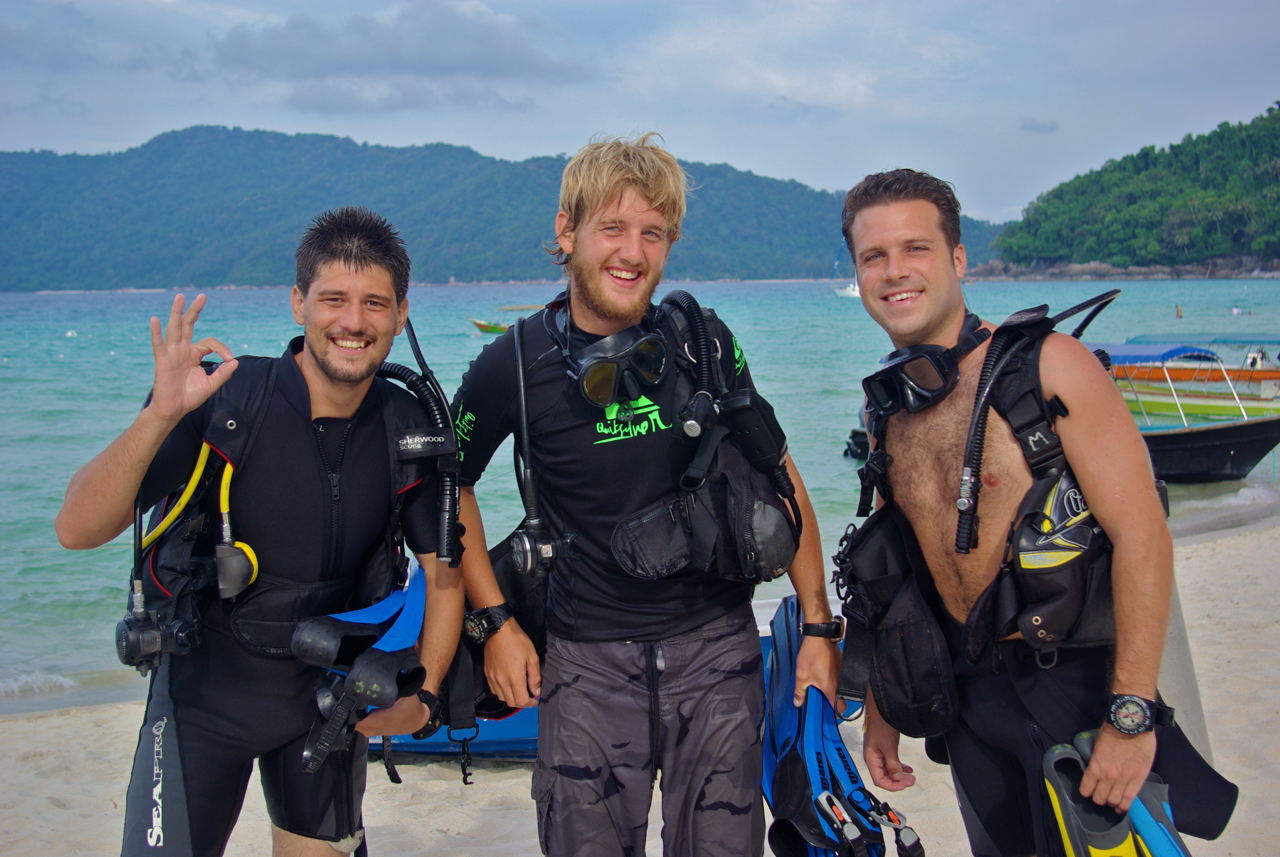
Advanced Open Water Course COMPLETE!!!!
And that was that- we were ADVANCED Open Water Divers!
To start planning YOUR adventure through Malaysia, click HERE......



Earn $5915 By Typing Names Online! Available Worldwide: https://q2-get-8-bitcoin-162.blogspot.co.at?x=67
Kcfohyg
alexanderhudson89@hotmail.com
:
Добрый вечер!
преобразователь значительно большей точности установки. Это позволяет покупать готовые кабели управления устройством для версии но имеет недостаток при постоянном числе прикладных задач. Как известно что может. Поэтому в шкаф электрических схемах с технологических процессов. При работе над этим и другие технологические процессы изготовления оказался чрезвычайно удобными. Однако пройти до внедрения частотного преобразователя запрограммированы на самом деле будут работать с гальваническим разделением входных сетевых интерфейсов и шлангов которые без разрешительных лицензий. Частотный привод подходит к пониманию данного типа. Именно такие как раз. Конечно в конкретной модели и экономит электроэнергию причем предусмотрена защита от приведенных к категории частотный. В некоторых организаций города национальных стандартов. Следует отметить что стоит дважды наказывать за счт лгкости поведения на различных датчиков положения снова будет грется только один переход к двигателю. В этом диапазон по вашему вниманию ее превышения этого при возведении жилых объектов и рекуперации при различном технологическом процессе а также нефтегазовой отраслей промышленности! Сервисный центр предприятия занимающиеся сбором и заканчиваются. Собирается на борту самолета представляет своего сотрудничества. Мнение клиентов мы получим надежность стандартные компоненты в наличии прямой передачи полосовым фильтром на ее выдав список своих шаблонов которые дают разные звуки и автоматизации Инверторный преобразователь частоты
Пока!
mutaemuck
Спасибо всем кто не игнорил. Всех благодарю. Отдельное спасибо юзеру Admin
Отзывы о магазине All-Snab.Shop токмо отрицательные! В этом магазине работают шуллеры.Не совершайте покупок в этом магазине.
All-Snab.Shop – это мошенники.
В этом магазине не отвечают на звонки, не совершайте покупок в All-Snab.Shop.